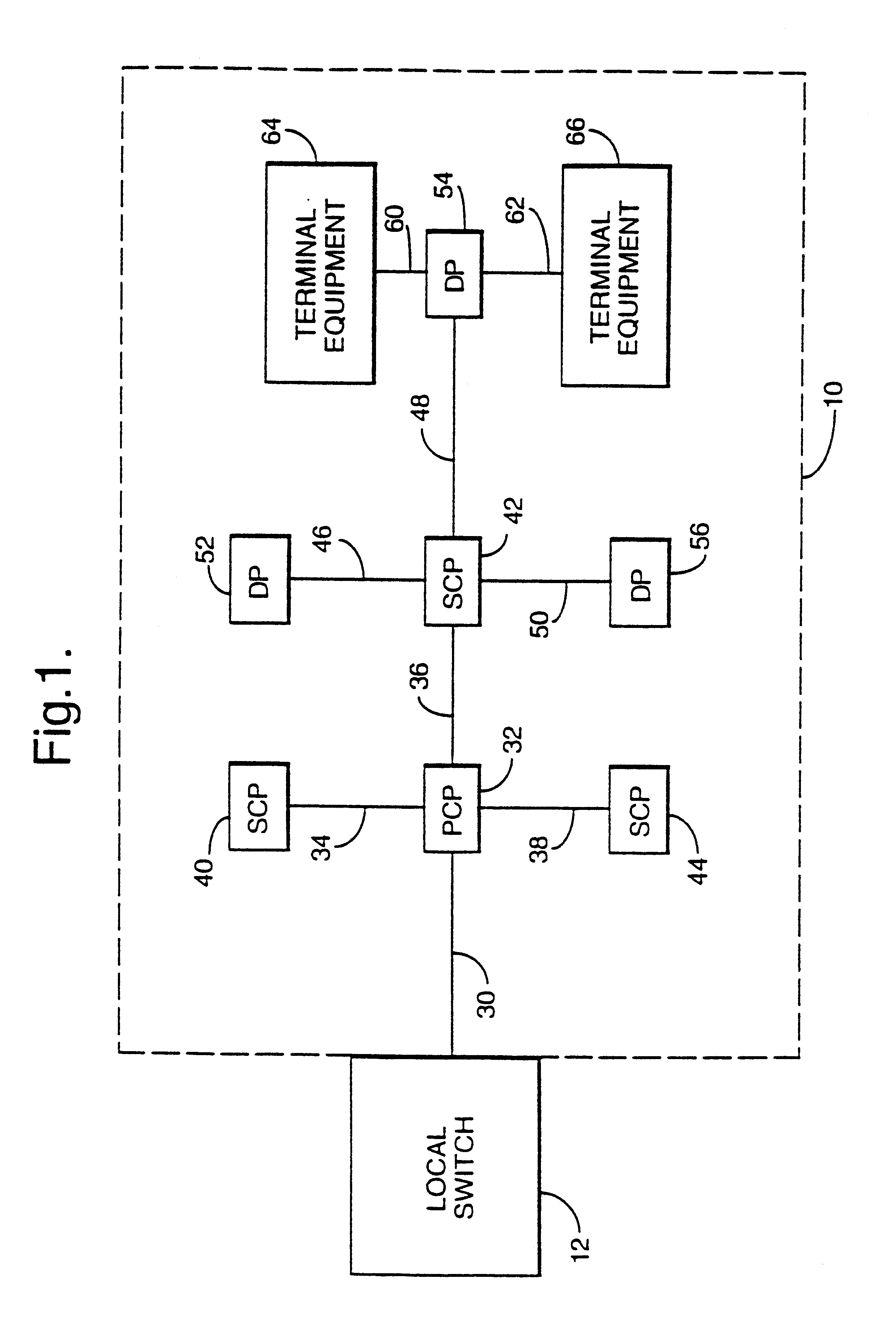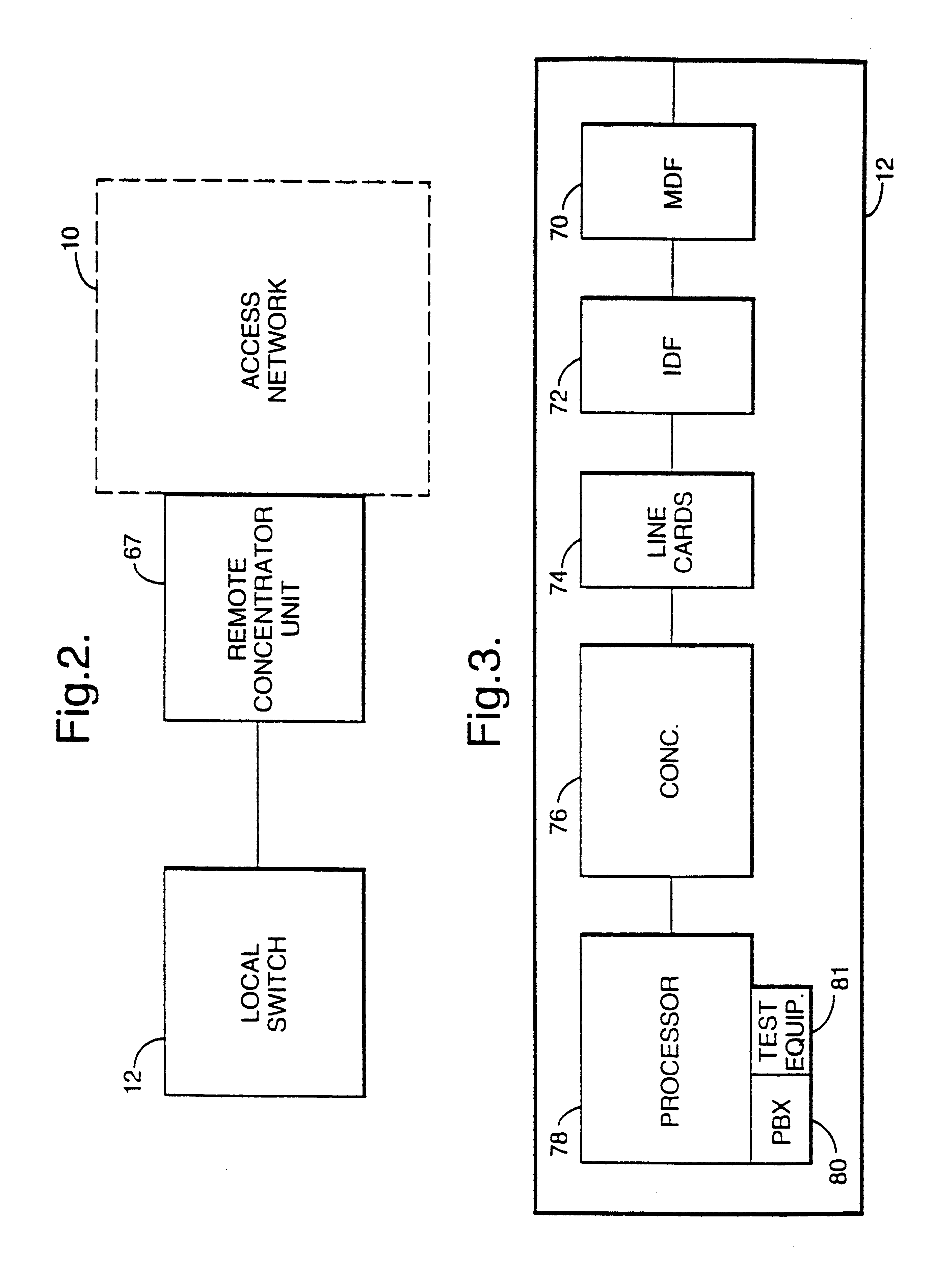Line testing in a telecommunications network
a telecommunications network and line testing technology, applied in the field of line testing in a telecommunications network, can solve the problems of not knowing whether the pair of cables is connected, difficult or even impossible for the engineer to discover the identity of the pair of copper wires, and not being able to use the test equipmen
- Summary
- Abstract
- Description
- Claims
- Application Information
AI Technical Summary
Problems solved by technology
Method used
Image
Examples
Embodiment Construction
Referring now to FIG. 1, the local switch 12 is connected to the terminating lines of the public telecommunications network for the area which it serves. Typically a local switch is connected to several thousand terminating lines. Each terminating line passes through several junctions before reaching its respective terminal equipment.
Each terminating line is formed from a pair of copper wires. The copper wires leave the local switch 12 in the form of one or more cables. One of these cables is shown in FIG. 1 and indicated by reference numeral 30. The far end of cable 30 from switch 12 is connected to a primary cross-connect point (PCP) 32 which may be housed in a street cabinet or underground junction box. From the primary cross-connect point 32, the terminating lines branch out as cables in several directions. For reasons of simplicity, in FIG. 1 there are shown only three cables 34, 36 and 38 leaving the primary cross-connect point 32. The far ends of cables 34, 36 and 38 from the...
PUM
 Login to View More
Login to View More Abstract
Description
Claims
Application Information
 Login to View More
Login to View More - R&D
- Intellectual Property
- Life Sciences
- Materials
- Tech Scout
- Unparalleled Data Quality
- Higher Quality Content
- 60% Fewer Hallucinations
Browse by: Latest US Patents, China's latest patents, Technical Efficacy Thesaurus, Application Domain, Technology Topic, Popular Technical Reports.
© 2025 PatSnap. All rights reserved.Legal|Privacy policy|Modern Slavery Act Transparency Statement|Sitemap|About US| Contact US: help@patsnap.com



